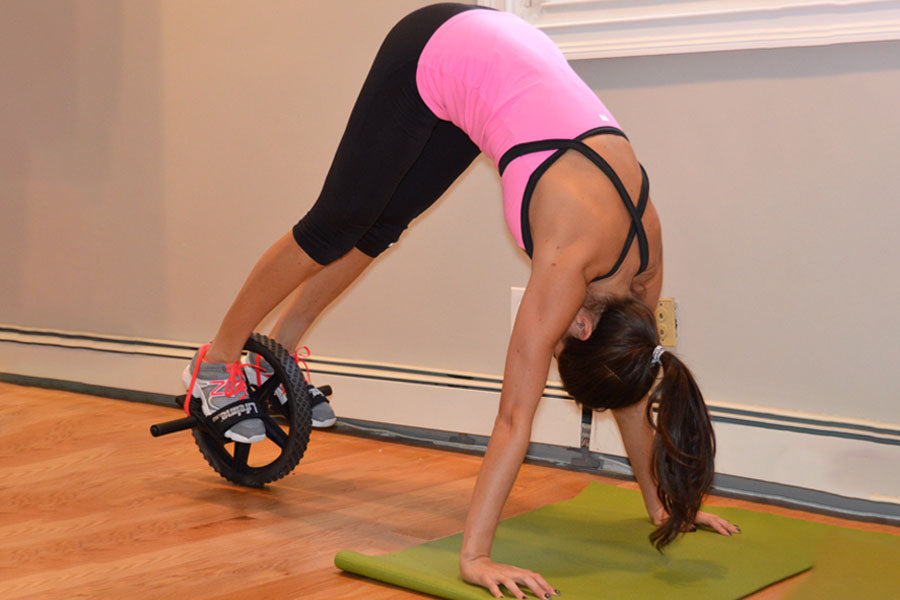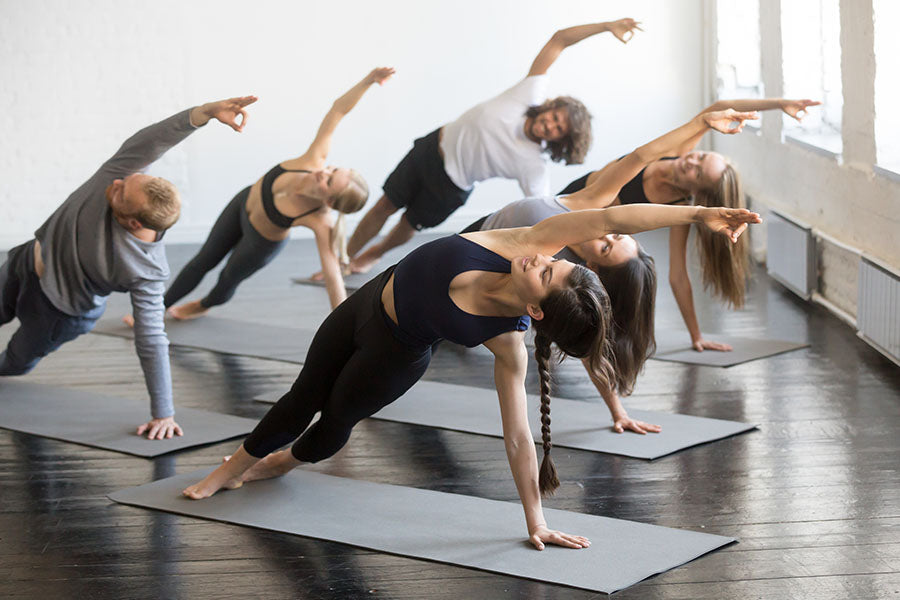Oblique exercises are often neglected when people are looking to develop six-pack abs. This is because most people focus on exercises that work the rectus abdominis, the muscles in the front of the stomach. However, the obliques, which are the muscles on the sides of the stomach, are just as crucial for achieving six-pack abs.
Strong obliques help stabilize the spine and protect the lower back. They also assist in movements such as bending and twisting.
Some stunning exercises like abdominal bracing, bicycle crunches and others work best for developing the obliques. These should be included in any workout routine that is focused on gaining six-pack abs. This article discusses the anatomy of oblique muscles, what oblique exercises are, their benefits, and the 7 best science-backed oblique exercises for six-pack abs.
What are Oblique Muscles?
Oblique muscles are strong yet flexible muscles that form the sides of the abdominal wall and play an important role in posture and stabilization. These muscles, located on either side of the torso, stretch from the rib cage to the pelvis.
In addition to their role in the movement, oblique muscles are crucial for developing aesthetically pleasing upper body muscle tone. Regular exercise can help strengthen oblique muscles, reduce waistline circumference, and sculpt abs for a more desirable physique.
The oblique muscles are located on the sides of your abdomen and help to give you a six-pack. Two abdominal muscles create your obliques—the external and the internal— which enable you to rotate your spine, trunk, and core. Furthermore, they support your posture and back region as a whole.
Related Article: The Best Muscle Groups to Work Out Together for Best Results
What are Oblique Exercises?
Often overlooked in one's daily workout, oblique exercises can provide some of the best results for those who wish to develop their waistline and overall more athletic body. Understanding what oblique exercises are and which best suit one's needs.
Women have their own specialized set of oblique exercises best suited for them since they generally require different muscular structures than men due to differences in physical makeup; however, both genders benefit significantly from regular bouts of oblique exercising with wide-ranging impacts beyond just achieving a strong core.
Engaging your oblique muscles in exercise can foster strength and stability of the midline, back, posture, and pelvic region. Rotational movements additionally engage these core muscles, which further strengthens them.
This increase in core muscle power will improve your performance in sporting activities since a more fortified foundation facilitates greater force production from the upper and lower extremities.
Related Article: Workout Plan to Build Stronger Core & Strength
Benefits of Oblique Exercises
Oblique exercises are a great way to improve core strength and create more balanced muscular development. By targeting your oblique muscles through specific exercises, you can help reduce excess body fat in the area and improve posture.
Obliques strengthen the spine's stabilizing muscles, helping reduce lower back pain. Moreover, they help ensure the following benefits:
Enhanced Core Strength
Regular oblique exercises can significantly improve your core strength. Not only can oblique exercises help you develop a rock-solid center, but they also help you build the strength needed for everyday activities like sitting upright, reaching overhead, and even picking up heavier objects quickly.
Improved Posture
Regularly performing dedicated oblique exercises can help improve posture by strengthening abdominal muscles that hold up your spine. By targeting your core muscles, these exercises help realign your body's posture so that you stand up straight. Your core muscles become stronger, providing a better foundation for improved posture.
Additionally, strengthened oblique muscles can reduce stress on the spine and give greater support to your core and shoulder muscles. Engaging in oblique exercises can benefit anyone with poor posture by helping to move the body into a healthier state.
Reduced Risk of Injury
One of the many benefits of oblique exercises is the reduced risk of injuries. Not only do they help strengthen and stabilize core muscles, but they also improve the range of motion and flexibility around the spine. This makes them essential in any exercise program as they help protect against various injuries.
Regular oblique exercises can enhance balance, coordination, and overall body mechanics, minimizing potential injuries and allowing you to perform higher-level movements efficiently. So if you're looking for a way to reduce your risk for injury and improve your athletic performance, add some oblique exercises into your routine.
Six-Pack Abs Achieved
More than just core strength and posture, oblique exercises can help you get the six-pack abs many strive for. Many of these exercises target the rectus abdominis muscle, which is responsible for giving your midsection that toned look.
This helps to create a stronger core and enhance abdominal definition, helping you achieve the coveted “six-pack” appearance. So if you're looking for a way to turn heads at the beach or in the gym, adding some oblique exercises into your workout routine will help you get there.
7 Best Oblique Exercises for Six-Pack Abs
Many exercises can target the obliques, but not all are effective. Here are seven of the best science-backed oblique exercises you can do to get those elusive six-pack abs:
1. Abdominal Bracing

Abdominal bracing is a technique that can be used to isolate best and target the abdominal muscles. Apart from strengthening the core muscles, abdominal bracing has numerous other benefits.
It can help athletes generate more force in their movement, increasing power, and efficiency. Additionally, bracing helps protect athletes from common injuries by providing additional stability to the lower back and other vulnerable body areas.
A study published in the Journal of Sports Science and Medicine noted that this exercise produced significantly higher muscle activation than nine other static and dynamic abdominal exercises.
How to Do It?
- Lie on your back on the floor with your knees bent.
- Engage your core muscles, drawing your abdomen towards your spine and tensing the abdominal wall.
- Hold this position for 10 seconds.
- Relax and repeat 2-3 sets of 10 reps with a brief rest between sets.
2. Bicycle Crunches

Bicycle crunches are an excellent exercise for targeting the obliques. This movement engages all your core muscles and helps increase overall abdominal strength. Additionally, it is an excellent way to improve balance and coordination by increasing muscular control in the hips and trunk region.
The American Council on Exercise (ACE) conducted a study to discover which of 13 popular abdominal exercises was the most effective. The results were precise—the "bicycle maneuver," better known as the bicycle crunch, emerged triumphant for its capability to target and engaged all three sets of abs muscles simultaneously!
This makes it an ideal choice for one exercise that will work your entire core efficiently.
How to Do It?
- Lie flat on your back with your hands behind your head.
- Bring one knee up toward your chest while keeping the other leg straight.
- Simultaneously rotate your upper body towards the bent knee.
- Alternate legs and repeat 2-3 sets of 10 reps on each side, resting briefly between sets.
3. V-Sit

V-sits are an excellent exercise for targeting and strengthening the obliques. This movement can help improve spinal stability, increase abdominal strength, and promote better posture. It is also great to build muscular endurance by simultaneously challenging your core and hip muscles.
A study published by the Journal of Sports Science and Medicine concluded that when it comes to bodyweight abs exercises – none could compare to the V-Sit. This is due to its ability to target and activate midsection muscles more than other workouts.
How to Do It?
- Sit on the floor/yoga mat with your legs extended in front of you.
- Keeping your back straight, lean back slightly as you lift your legs off the ground.
- Keep your arms outstretched for balance.
- Bring your knees slowly towards your chest while keeping your torso upright until they form a 45 degrees angle.
- Maintain your body in a V-shape form for 10 to 15 seconds, striving to expand the amount of time you can hold this stance as time progresses.
4. Hanging Oblqiue Knee-Ups

Hanging oblique knee-ups are a great way to target the obliques and engage your core muscles. Not only do they increase abdominal strength and stability, but they also challenge your grip strength as you hang from a bar or ring.
A study published in the Physical Therapy and Rehabilitation Journal revealed that the Hanging Oblique Knee-Ups exercise generated significantly higher external and internal oblique muscle electromyography (EMG) responses than conventional or unconventional abdominal exercises.
How to Do It?
- Find a secure pullup bar or set of gymnastic rings.
- Grab the bar/rings with an overhand grip slightly wider than shoulder-width apart.
- Hang from the bar/rings with your knees bent and feet together.
- Pull your knees up and diagonally towards your chest while tensing your abdominal wall.
- Slowly lower yourself back down until your arms are fully extended.
- Repeat 2-3 sets of 10 reps on each side, resting briefly between sets.
5. High to Low Cable Woodchoppers

High-to-low cable woodchoppers are an excellent exercise for targeting the obliques. This movement helps increase the strength and stability of the core muscles while also improving balance, coordination, and range of motion in the hips and trunk region.
How to Do It?
- Attach cable attachments like rope or handle attached to a high pulley cable machine.
- Stand with feet slightly wider than hip-width apart, facing to the side of the machine.
- Grab the handle with both hands, pull the handle down towards one side of your hip as you rotate your torso sideways.
- Reverse direction and bring back up diagonally.
- Repeat 10 reps on each side for 2-3 sets with a brief rest between sets.
6. Decline Bench Curl-Up

Decline bench curl-ups effectively target the lower abdominal region. Additionally, it is a great way to challenge your muscular endurance by requiring you to hold the contraction of your abdominals for more extended periods.
A study by the University of Wisconsin uncovered that a Decline Bench Curl-Up, or incline reverse crunch as commonly known, produces higher electromyography activity than the conventional crunch exercise. This is due to athletes having to contract their external oblique muscles to maintain stabilization during this workout.
The incline curl-up was officially ranked as the second-best exercise for obliques by a study published in the American Council of Exercise, with only the Ab-Wheel rollout beating it. This fantastic combination between knee raises and crunches can be an incredible addition to any fitness routine.
How to Do It?
- Lie on a decline bench with legs off the end and feet strapped in.
- With arms crossed over your chest, engage your core muscles and curl up until your shoulders are off the bench.
- Hold this position for 10 seconds before lowering back down.
- Repeat 2-3 sets of 10 reps on each side, resting briefly between sets.
7. Ab Roller Pike

Ab roller pikes are a highly effective exercise for targeting your obliques and strengthening the core.
A study mentioned that the Ab Roller Pike was deemed the most proficient in activating oblique muscles.
The researchers from The Journal of Orthopaedic and Sports Physical Therapy compared abs exercises performed with a Swiss ball. They concluded that the pike (and roll-out) were extraordinarily effective at stimulating internal and external obliques.
How to Do It?
- Begin by kneeling on the ground with arms extended in front of you.
- Place both feet on the ab roller handles and squeeze your glutes.
- Roll the power wheel forward until your body is in a pike position.
- Begin to roll back towards your starting point and repeat 10 reps for 2-3 sets with a brief rest between sets.
Conclusion
Developing strong obliques can be incredibly beneficial, especially regarding posture. Working these muscles can positively impact the alignment of the spine and hips, which leads to strengthening the core and enhancing stability.
Regularly performing oblique exercises that target both sides of the body equally allows for more efficient standing, sitting, and movement throughout daily life. Moreover, increased strength in this muscle group can reduce the strain on your back caused by poor posture and imbalance between muscles.
As you progress and become stronger in these movements, strive to challenge yourself further by increasing the number of repetitions or the amount of time held for each exercise. With regular practice and dedication, you can achieve great results and develop strong abdominals that will benefit you in everyday life!
Reading List
Article Sources
- Escamilla, Rafael F., et al. “Core Muscle Activation During Swiss Ball and Traditional Abdominal Exercises.” Journal of Orthopaedic & Sports Physical Therapy, vol. 40, no. 5, May 2010, pp. 265–76. jospt.org (Atypon), https://doi.org/10.2519/jospt.2010.3073
- Escamilla, Rafael F., Eric Babb, et al. “Electromyographic Analysis of Traditional and Nontraditional Abdominal Exercises: Implications for Rehabilitation and Training.” Physical Therapy, vol. 86, no. 5, May 2006, pp. 656–71.
- Maeo, Sumiaki, et al. “Trunk Muscle Activities during Abdominal Bracing: Comparison among Muscles and Exercises.” Journal of Sports Science & Medicine, vol. 12, no. 3, 2013, pp. 467–74.
- Stenger, Edward M. Electromyographic Comparison of a Variety of Abdominal Exercises to the Traditional Crunch. Dec. 2013. minds.wisconsin.edu, https://minds.wisconsin.edu/handle/1793/67303.











